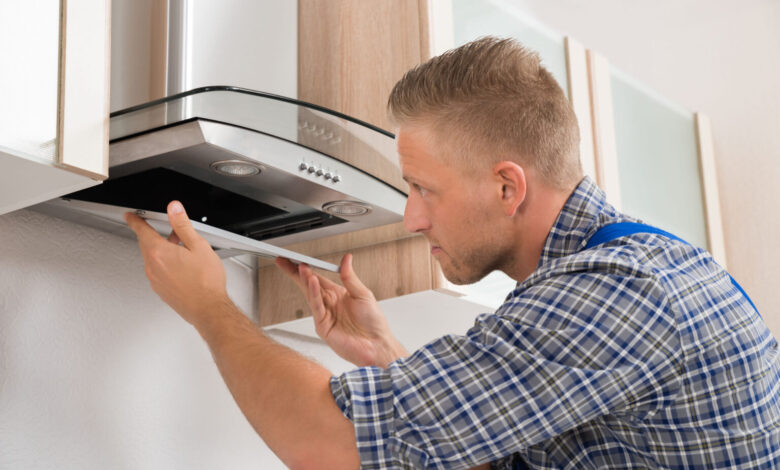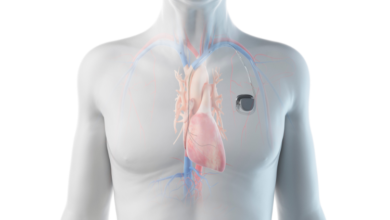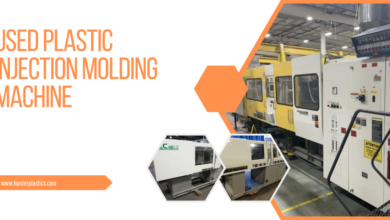Mastering Ventilation: The Art of Kitchen Vent Installation and Maintenance
Mastering Ventilation: The Art of Kitchen Vent Installation and Maintenance

Cooking and more cooking activities happen all the time in the kitchen, usually the busiest room in the house. Nevertheless, with the magic often come smoke, steam, and grease in the air, which necessitates the need for kitchen ventilation systems, and this is where design comes to play. A kitchen hood works efficiently to keep the kitchen odour and grease free and absolutely healthy as it protects the skin and the lungs. And to get the best installation or repair results in kitchen hoods as part of mastering kitchen hood installation and repair will play an important role in great kitchen ventilation.
The Reasons For Kitchen Ventilation
Adequate ventilation in a kitchen should be considered not only the luxury but something that is required to guard the health and safety of an individual and family members. Cooking produces heat, smoke, and grease which has harmful items that can settle on surfaces, produce bad smell, and even can cause fire. In the absence of an effective ventilation system, the inapproriate and unnecessary contaminants will remain in the air and such will be detrimental to the inflating air standard levels within the building.
A kitchen hood repair, commonly referred to as range hoods or extractor hoods, is a smoke and steam capturing, grease containing, and air extracting device. Its healthy air qualities go to the extremes and alleviate the problems of grease accumulation on top or other flat surfaces, reduce chances of fire hazards and assist in creating a more pleasant cooking experience.
Choosing the Right Kitchen Hood
The most basic requirement in ensuring effective kitchen ventilation is to choose the relevant hood for the kitchen. A number of factors should be kept in mind while buying a kitchen hood:
Size and Power: The size of your hood must correspond to the size of the area. Ideally, the hood should be as wide as the cooker or stove in order to optimise air capture for the range. With regard to power, this is measured in cubic feet per minute (CFM), basically the higher the CFM the better the suction power. The right CFM rating however is hinged on the nature of the cooking done in your kitchen. For instance, a lot of frying or over high heats cooking means a lot more hood power is needed.
Ventilation Type: Kitchen hoods come in two main types: ducted and ductless When a ducted hood is installed, then this leads to wearing out of the air and other materialsInline motors are more powerful than external motors. A ductless hood, on the other hand, recirculates air through filtration before redistributing it back into the kitchen. Such models tend to be more straightforward, although, in order for them to be effective, filter replacements must be done regularly.
Design and Style: Kitchen hoods come in many stylish designs, and thus, aesthetics is very important apart from functionality. Depending on how a kitchen is laid out, wall-mounted hoods, island hoods, and under-cabinet hoods are some of the options that can be picked which have been designed in regards to the layout.
Installing a Kitchen Hood: Key Considerations
It is not enough to just buy or use a kitchen hood. Properly placing the hood in the kitchen requires a good understanding of the machine as well as the specific tasks and areas that will be occupied by the appliance. Correct installation facilitates optimal hood operation and eliminates foreseeable areas of long term troubles.
Determine the Ideal Height: The height at which you install your hood is very important for effectiveness as well as for safety. The general guideline is that such hoods are installed 20 to 30 inches above the stove. Mounting the hood too high would limit the efficiency of smoke and steam collection, while mounting it too low could damage the hood or cause a user inconvenience during cooking.
Prepare Proper Ventilation Ducting: In case you are installing a ducted hood, the ductwork has to be well designed. Vertical and horizontal ducts should be as short as possible to increase airflow with minimal resistance. Ensure that the duct is vented through the wall and not into the attic or crawl space to avoid moisture and other associated problems.
Electrical Requirements: Due to the large amount of power used, kitchen hoods may need their own electrical circuits. Where a new hood is installed in place of the old one, check that the wiring available complies with the electrical needs of the new hood. To update wiring or to fit new circuit may sometimes require professional electrician help.
When to Seek Professional Help: Some of the kitchen hood installation aspects can be handled as home improvement projects but, for complicated fittings, it is always best to leave down the work to an installer template. They can be able to confirm if the ducting was professionally done, the electricals are up to standard and the hood was well fitted.
Common Space Kitchen Hoods Problems & Their Fixes
Even kitchen hoods, like any other appliance, experience wear and tear. Tackling the small problems nearly always prevents bigger issues further down the road. We have prepared some of the kitchen hoods problems that should be tackled as well as the possible solutions:
Ineffective Ventilation: A kitchen hood that is ineffective at smoke or odour removal is where the source can be found clogged filters or blocked ducts.
Remove any filters and clean them or replace them when necessary all the time. Make sure you check the ductwork for any sort of hindrance which may impede airflow.
Unusual Sounds: When a kitchen cloak is running more than the normal sounds it should induce or has some grating sounds, it may be troublesome but it is usually with a kitchen hood. An abnormal noise is usually characteristic of a problem with the fan or motor, for instance, there may be loose components, materials lodged between the fan blades or a strong burning smell from a motor that is at the verge of giving up. Correct any loose screws or other fittings; otherwise, ask an expert to check and redo various damaged components.
Lighting Problems: Most kitchen hoods tend to be installed with lighting options that helps enrich the cooking zone. When such lights do not function or stop working, it is probably just a bulb replacement issue. But, if it is not a light bulb problem, then it could be a wiring or a switch problem that needs an electrician.
Hood Not Providing Operation: Whenever the hood does not come on, attempting to troubleshoot its operability; check the power supply connections, circuit breakers and power switches. It could be that there is a burst fuse or the electric cables are badly wired. If these simple issues do not solve the problem then it is advisable to get in touch with the service provider for further assistance.
The Need of Regular Maintenance
In order to perfect the working of the kitchen hood, regular maintenance is very important. The filters, ducts and outside surface of the hood should be cleaned at intervals to avoid grease deposition and enable easy air circulation. Ductless models will need to have their filters changed more often than ducted ones, which will only require inspection once a year for any blockages or damage in the duct.
Conclusion
It is important to note that learning how to install as well as repair kitchen hoods will come in handy especially for anyone wishing to work in a clean and safe kitchen. Such improvement will begin with knowing how to choose the right hood, performing its installation correctly and even troubleshooting any issues that may arise with the hood in a timely manner. Even in cases where you decide to do the installation on your own or hire someone, these details will be attention will ensure achievement of optimal designs and durability.





